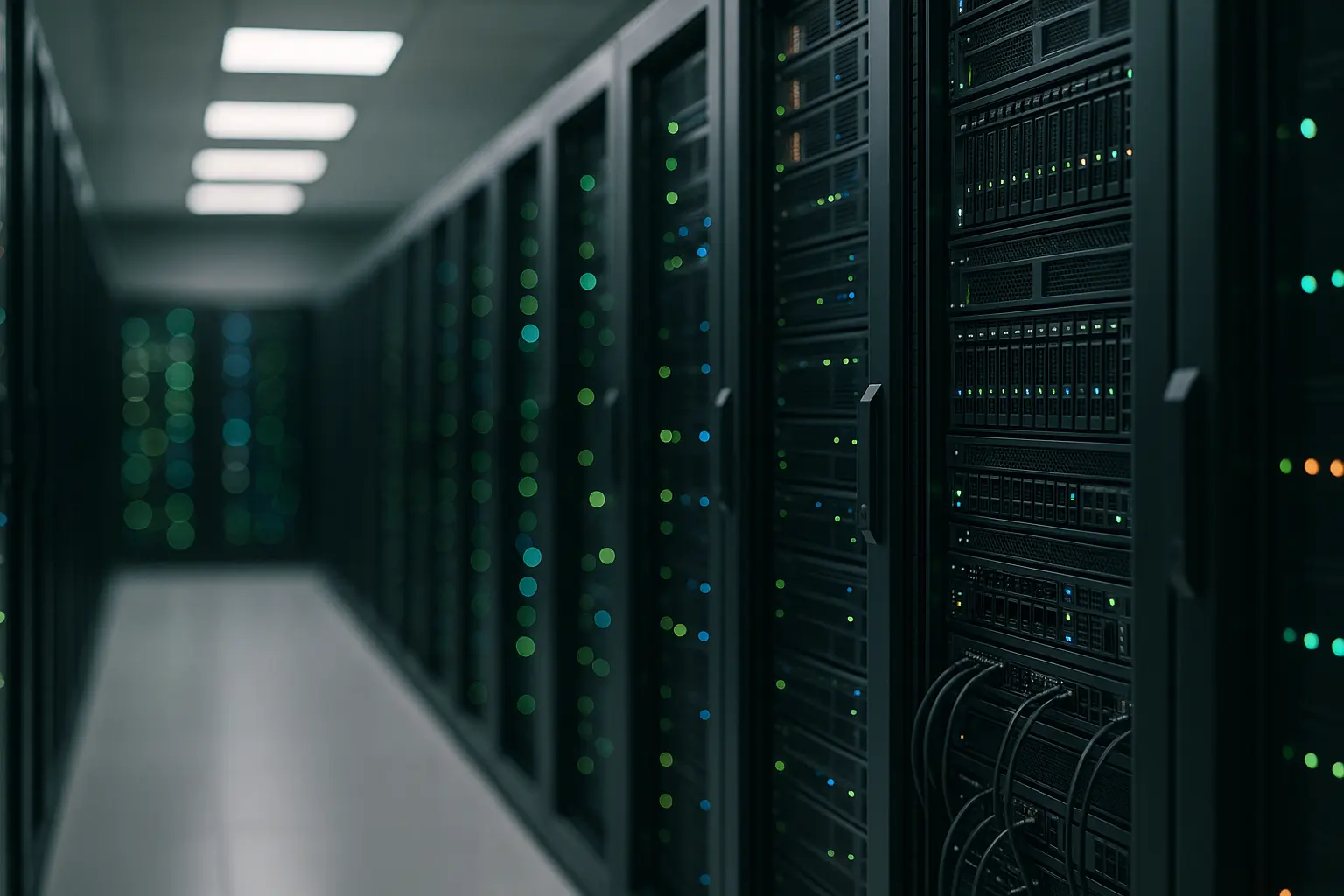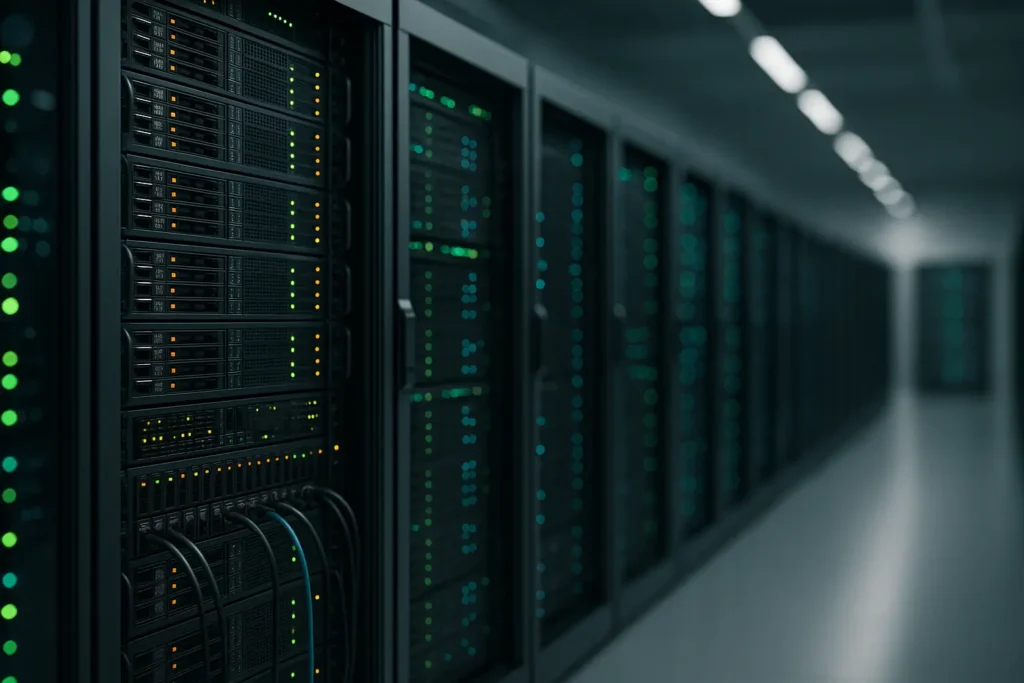In a world where artificial intelligence is reshaping industries at an unprecedented pace, the role of data centers has never been more crucial. We stand on the brink of a technological revolution driven by data, where the very heart of operations—the data center—must evolve to keep pace with rising demands. The question at hand is not merely about readiness but about transformation. As we integrate AI into our infrastructures, we need to ensure our data centers are robust, efficient, and future-ready to handle the tidal wave of workloads that AI technology brings. Are we prepared to meet this challenge head-on, or will we lag behind as the world surges forward?
The Modern Data Center: Meeting the Demands of Today and Tomorrow
The data center of the past was a fortress of servers and storage, humming gently in the shadows. Today, however, the landscape has changed. As AI technologies continue their rapid ascent, the demand for high-performance, scalable infrastructure is at an all-time high.
Our responsibility is to ensure that our data centers are not only equipped to handle the current workload but are also agile enough to rapidly adapt to future needs. This shift requires a new approach to designing and constructing data facilities, placing emphasis on scalability, energy efficiency, and seamless integration of cutting-edge technologies.
With the rise of AI, power and cooling solutions are at the forefront of data center design. These elements are no longer mere considerations but are now pivotal components of a successful data strategy. Companies are investing heavily in sustainable, innovative cooling systems to manage the heat generated by increasingly powerful servers.
Moreover, the demand for energy-efficient solutions is not just an environmental necessity but an economic imperative. The industry needs to adopt renewable energy sources and smart grid technologies to meet both regulatory requirements and market expectations. We are witnessing a shift from traditional methods to cutting-edge solutions that promise reduced energy consumption and improved performance.
Ultimately, the modern data center is a dynamic entity, designed to evolve and adapt to an ever-changing landscape. Our role is not just to keep pace but to lead the charge, ensuring our infrastructure meets and exceeds the demands of a future driven by AI.
Strategic Infrastructure: Balancing Risk and Innovation
In the realm of data centers, balancing innovation with risk management is paramount. As we forge ahead, our strategic infrastructure decisions will determine our ability to harness the full potential of AI. This journey is not without its challenges, but with strategic foresight, we can mitigate risks while reaping the rewards of advanced technologies.
One of the primary concerns is the complexity of integrating new technologies into existing infrastructure. The risk of disruptions is ever-present, and so is the challenge of ensuring compatibility with legacy systems. It is essential for companies to adopt a phased approach, implementing changes incrementally to minimize disruptions while maximizing the benefits of new technologies.
In addition to technological hurdles, security risks pose significant challenges. As data volumes grow, so too does the vulnerability to cyber threats. Ensuring robust security measures are in place is critical to safeguarding sensitive information and maintaining trust in our systems. Advanced encryption technologies, proactive threat detection, and comprehensive security protocols are non-negotiable components of a modern data center strategy.
Finally, it’s crucial to consider the market dynamics that influence infrastructure decisions. The competitive landscape demands not only high-performance solutions but also the ability to anticipate and respond to market shifts. This requires a deep understanding of industry trends and the foresight to invest in technologies that align with future demands.
Strategic infrastructure decisions are the cornerstone of a successful AI integration strategy. The path forward requires a careful balance of innovation and risk management, ensuring that our data centers are both future-ready and resilient.

Future-Proofing: Designing for Tomorrow’s Needs
As we look toward the horizon, the concept of future-proofing becomes central to data center design. The accelerating pace of technological innovation underscores the need for infrastructure that can seamlessly adapt to emerging demands. Our goal is to create environments that not only meet current requirements but are also primed for the future.
A critical component of this approach is modular design. This strategy allows data centers to expand and adapt without significant overhauls. By implementing modular architectures, we can efficiently scale operations in response to escalating demands brought about by AI-driven workloads.
Additionally, the integration of automation and AI within the data center itself is an exciting prospect. Automated systems can optimize resource allocation, monitor energy usage, and predict maintenance needs, resulting in enhanced operational efficiency. The synergy between AI and data center operations promises to unlock new levels of performance and cost-effectiveness.
The adoption of green technologies is another imperative. Sustainable practices, such as using renewable energy sources and implementing energy-efficient cooling solutions, are essential not only for environmental responsibility but also for long-term viability. These green innovations are critical in reducing operational costs and meeting regulatory standards.
Future-proofing our data centers requires a forward-thinking mindset, embracing innovation while maintaining flexibility. By anticipating future needs and investing in adaptable solutions, we can ensure our infrastructure remains resilient in the face of rapid technological advancements.
A New Era of Data Centers: Embracing Change and Opportunity
The age of artificial intelligence heralds a new era for data centers. As we embrace this shift, we are presented with unprecedented opportunities to redefine our infrastructure and operations. The challenge lies not only in adapting to these changes but in seizing the moment to innovate and lead.
It’s time to acknowledge the transformative power of AI and channel it to enhance our data centers. This involves fostering a culture of innovation, where experimentation and adaptability are celebrated. By encouraging creative solutions and embracing cutting-edge technologies, we can position our data centers at the forefront of industry advancements.
The collaboration between companies and technology providers is essential in this journey. By fostering strong partnerships, we can leverage expertise and resources to drive innovation and address complex challenges. This collaborative approach is pivotal in ensuring that our data centers are equipped to handle the growing demands of AI-driven workloads.
Finally, we must remain committed to continuous improvement. In a rapidly evolving landscape, the pursuit of excellence is an ongoing endeavor. By constantly evaluating and refining our strategies, we can ensure that our data centers not only meet but exceed industry standards.
Embracing the changes and opportunities presented by AI is not just about survival—it’s about thriving. By harnessing the potential of AI, we can unlock new levels of efficiency, performance, and innovation in our data centers, setting the stage for a future defined by progress and possibility.
The dawn of the AI era is upon us, and the question remains: are we prepared to meet its demands? As we have explored, the readiness of our data centers is pivotal in determining our success in this rapidly evolving landscape. By embracing modern design principles and innovative technologies, we can ensure our infrastructures are both resilient and adaptable.
In this journey, the balance between innovation and risk management is critical. We must strategically navigate the complexities of integrating new technologies while safeguarding against potential vulnerabilities. Our ability to future-proof our data centers through modular design and sustainable practices will be a key differentiator in the market.
Ultimately, the success of our data centers hinges on our willingness to embrace change and seize the opportunity for innovation. As we chart a course for the future, let’s be bold in our vision and steadfast in our commitment to excellence. The AI boom is not just a challenge—it’s an opportunity to redefine what’s possible in the world of data centers.
FAQ
What are the key infrastructure requirements for data centers to support AI workloads?
AI workloads demand significant processing power, high-speed networking, and ample storage. Data centers should be equipped with powerful GPUs or specialized AI processors, high-bandwidth connectivity, and scalable storage solutions to efficiently manage and process large datasets.
How can data centers optimize cooling systems to accommodate AI technologies?
AI technologies can generate substantial heat due to their intensive processing requirements. Data centers can optimize cooling by implementing advanced cooling systems like liquid cooling, increasing airflow, and using AI-driven thermal management tools to monitor and adjust temperature in real-time.
Why is scalability important for data centers in the AI era?
Scalability is crucial as AI applications can grow rapidly in both size and computational demands. A scalable data center can easily expand its resources, such as computing power and storage, to accommodate increased workloads without disrupting existing operations.
What role does data security play in preparing data centers for AI?
Data security is paramount in protecting sensitive information processed by AI applications. Data centers must implement robust security measures, including encryption, access controls, and continuous monitoring, to prevent unauthorized access and ensure data integrity.
How do energy efficiency considerations impact data centers supporting AI?
AI workloads significantly increase energy consumption, making energy efficiency a critical consideration. Data centers should adopt energy-efficient hardware, optimize power usage through AI-driven energy management systems, and explore renewable energy sources to reduce their carbon footprint.



